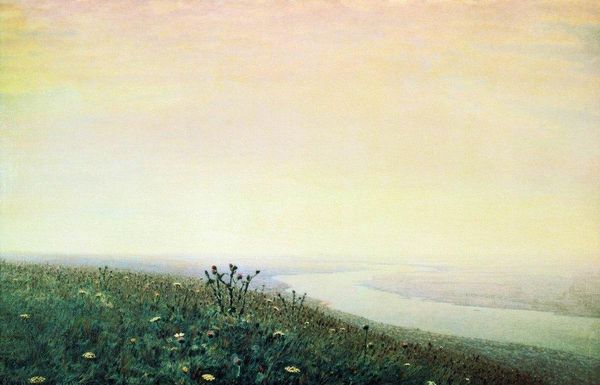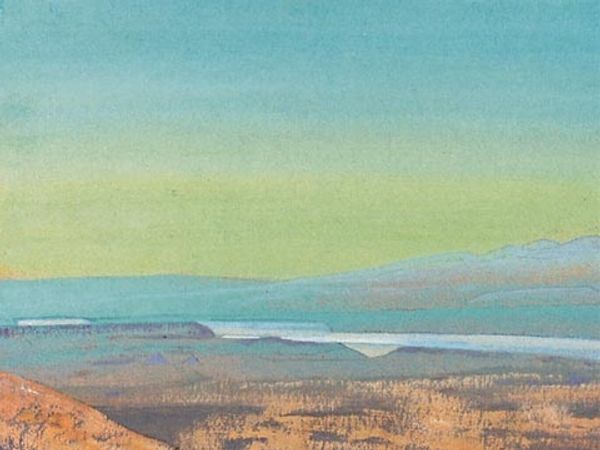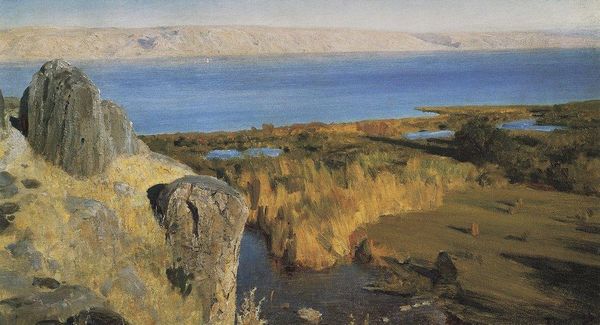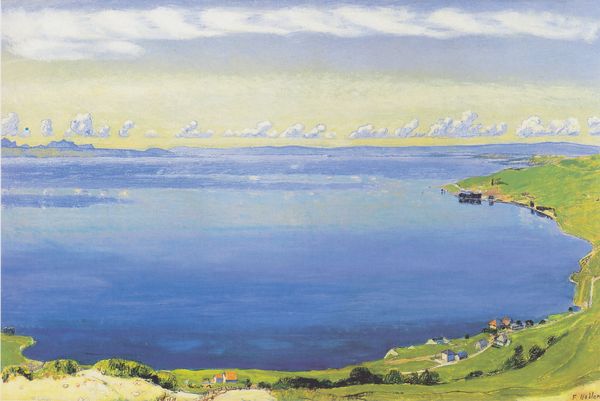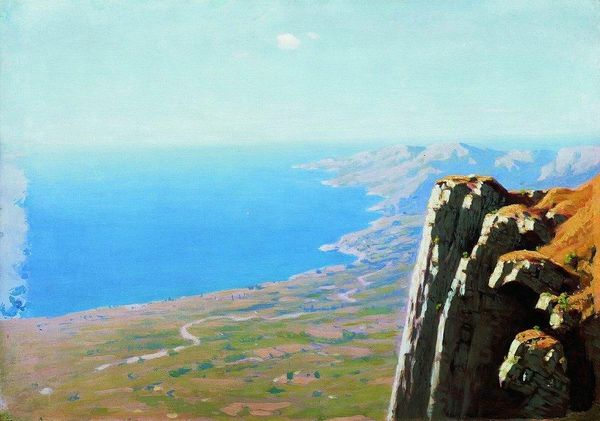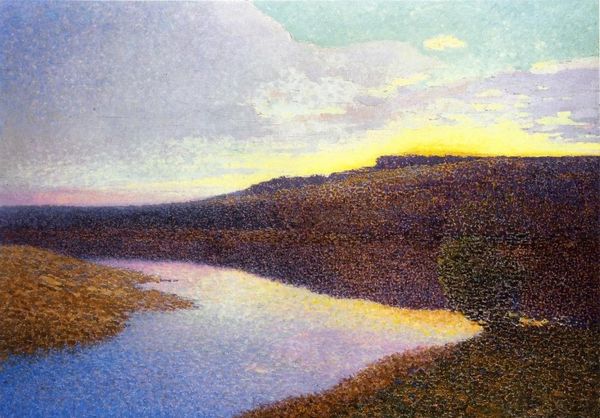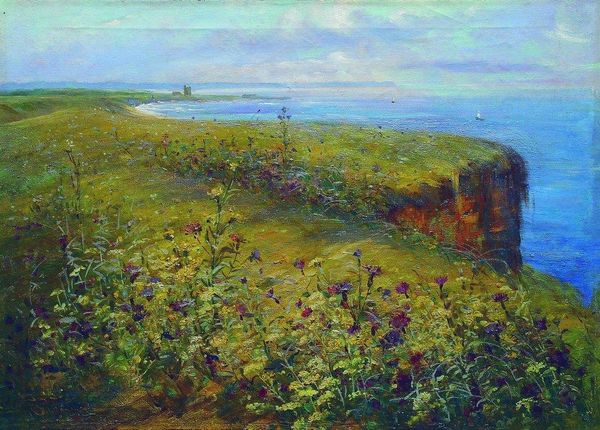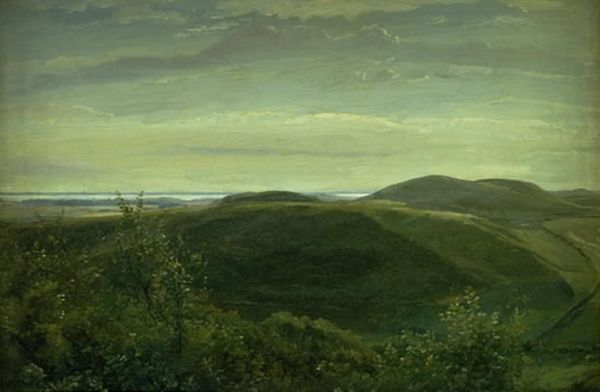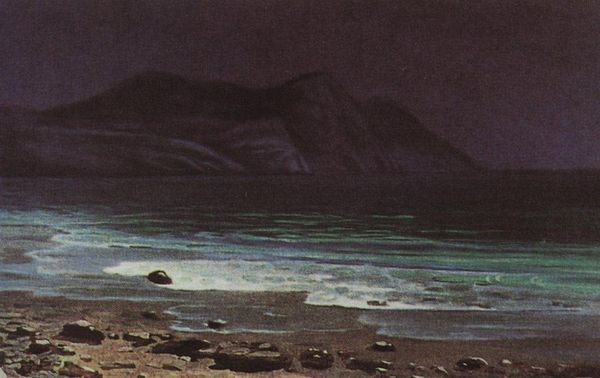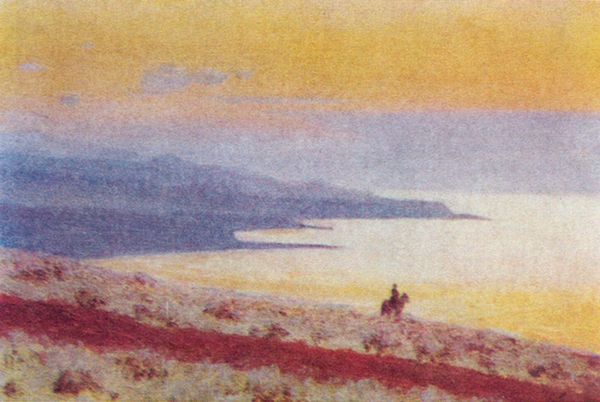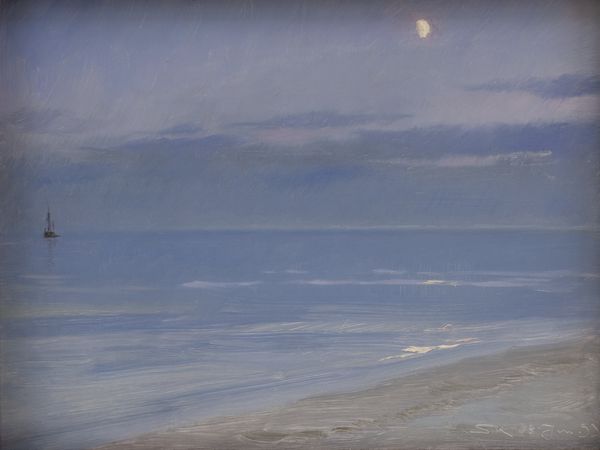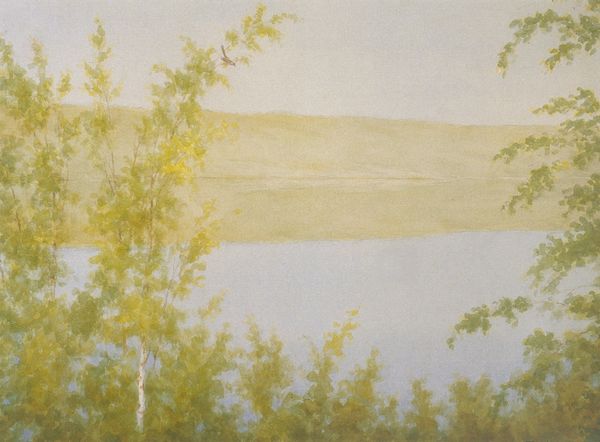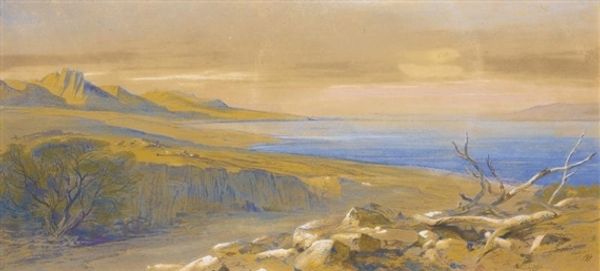
Copyright: Public domain
Editor: So, this is "Dnieper" by Arkhyp Kuindzhi, painted in 1901. It's primarily oil and tempera on canvas. The way the light shimmers on the water is striking, but I’m curious – what is it that you find most compelling about this piece? Curator: The materiality of the landscape itself, and how it connects to the burgeoning industrialization of the region at the time, that’s what I find fascinating. Consider the methods of acquiring these oil paints and tempera during the early 20th century, the canvas production, the distribution networks. How does the representation of this rather serene landscape stand in relation to these material realities of the day? Editor: I see what you mean. It's not just a pretty landscape, but it's tied to industrial and economic processes too. Curator: Precisely! What kind of labor went into the wheat fields or tending sheep or quarrying stones implied in the landscape, and, also, how does this idyllic vision relate to the realities of resource extraction and nascent industry nearby? The means of painting were intrinsically linked to these forces. What happens when we focus on how the work was actually *made*? Editor: That’s a really different perspective than I usually take. I tend to focus more on the image itself, the artist’s vision. But you're making me think about the supply chains involved! Curator: Right. We should examine Kuindzhi as part of these shifting social and economic dynamics. Editor: This makes me realize how much more there is to understand about any artwork beyond its surface appearance! Curator: Exactly! Every painting carries within it the traces of its own production, its place in an evolving society. It’s a network.
Comments
No comments
Be the first to comment and join the conversation on the ultimate creative platform.
